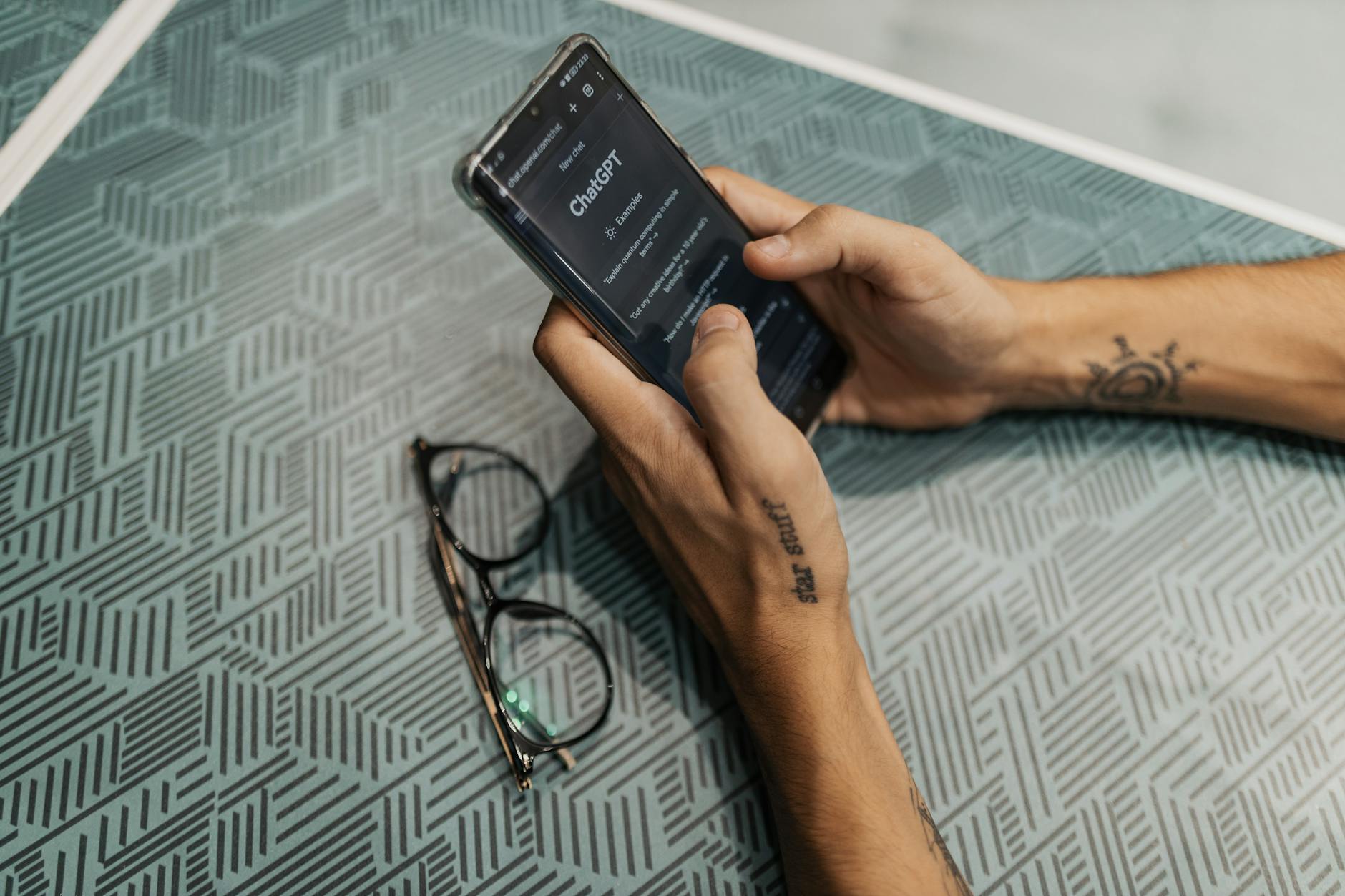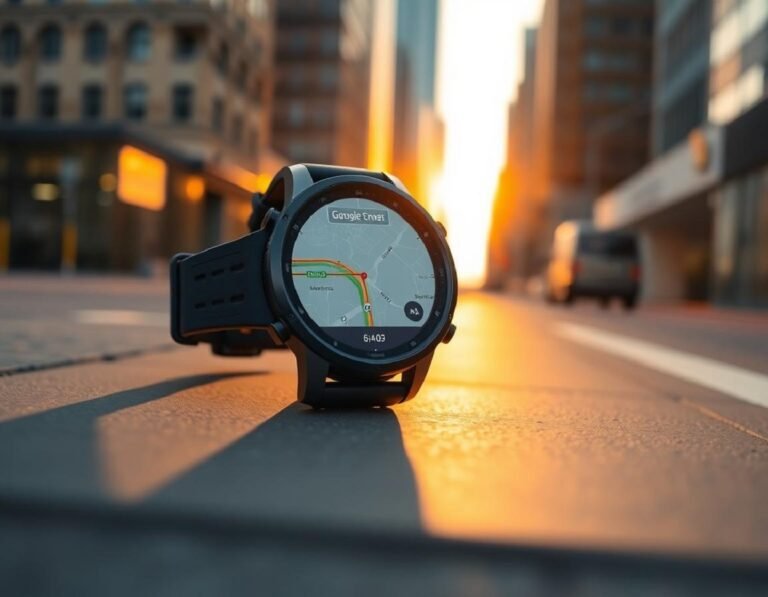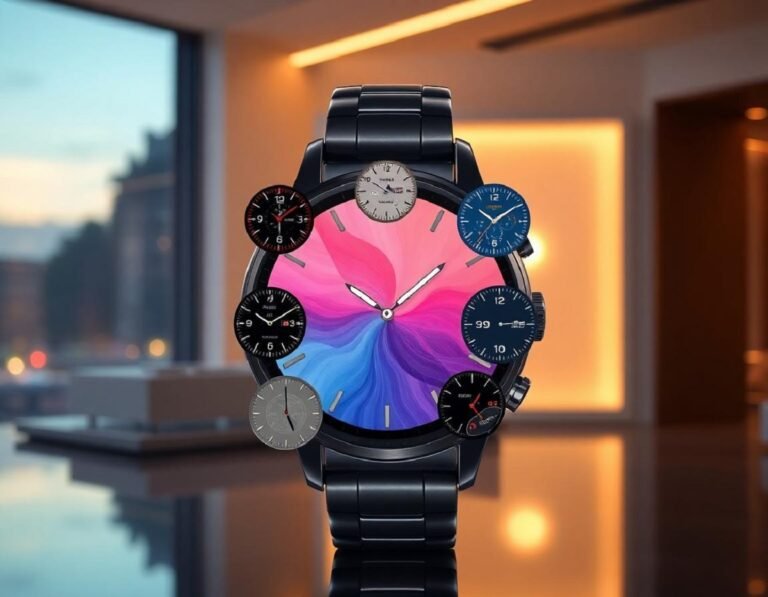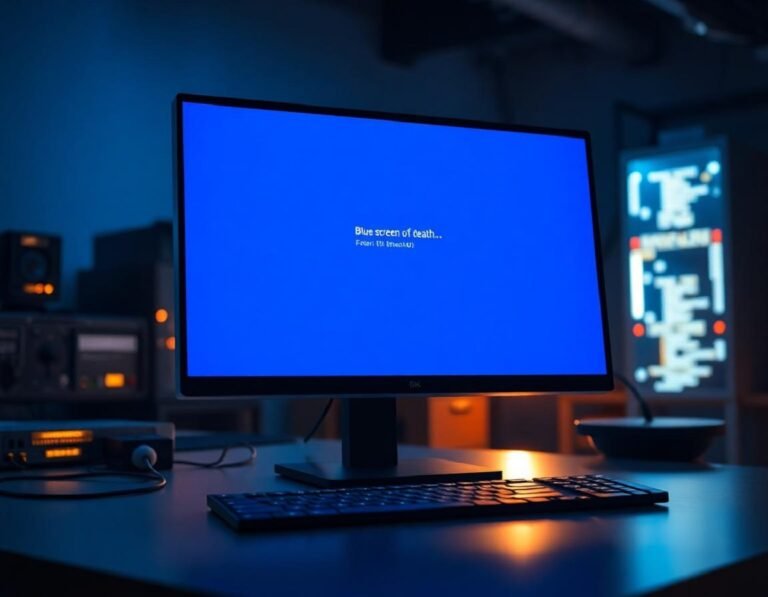Biggest Phone Changes from Apple’s iOS 26 and Google’s Android 16
How iOS 26 and Android 16 Are About to Change Everyday Phone Life [2025 Update]
It feels like every year, iPhone and Android updates become the talk of the tech world. People get curious, and for good reason. These updates don’t just add a few bells and whistles, they shape how we use our phones every single day.
This year’s jump to iOS 26 and Android 16 has sparked even more buzz. There’s real excitement building around smarter tools, smoother controls and fresh ways to save time or keep things private. Folks are already wondering what will change on their screens and in their routines, from simple texting to work and play.
With so much packed into each release, it’s clear these updates matter. Let’s get into which features are coming and how they’re set to shake up daily phone life.
Smarter AI Features Everywhere
AI-driven tools are turning our phones into clever personal assistants, and you’ll notice the difference right away in iOS 26 and Android 16. Both Apple and Google are focused on making helpers like Siri and the Google Assistant quicker, sharper, and more useful for the things we all do most. With much of this smart tech now running directly on your phone, tasks like sending a quick text, snapping the perfect photo, or getting help mid-call are all getting easier and faster.
AI-Powered Messaging and Calls
Texting and phone calls aren’t just routine—they’re where people live much of their daily digital life. Now, AI is making those basics smarter and more helpful.
- Smarter Smart Replies: iOS 26 and Android 16 both step up the “suggested reply” game. Quick replies are now more on point, using context from your last messages so your phone can offer super-relevant options, not just generic answers.
- Call Screening Upgrades: Android’s call screening already filtered out spam and robocalls, but now it also gives you AI-powered summaries and even suggests responses if you want to pick up the call. Apple is catching up with call handling too, making sure Siri screens for spam and helps with tricky unknown numbers.
- Voice Typing Gets a Boost: Hate tapping out long texts? Voice typing now feels like a real-time conversation. Thanks to on-device AI, Apple and Google both offer nearly instant transcription and much better accuracy, even with slang or background noise. These upgrades make sending a quick note with your voice feel almost effortless.
Want to see what these AI boosts look like on each device? Check the full Apple iOS 26 AI features and Android’s latest AI features to spot these tools in action.
Camera and Photo Magic
Photo features aren’t just for pros anymore—they’re everywhere, and they’re getting a huge upgrade thanks to smarter AI tricks baked right in.
 Photo by Matheus Bertelli
Photo by Matheus Bertelli
- AI Photo Editing: You don’t need a laptop or paid software anymore. Both platforms now let you tap and adjust photos with AI—think auto-removal of photo bombers, “fix my face” clean-ups, or even quick adjustments of lighting and color, all right in your camera app.
- Smart Album Sorting: Forget endless scrolling. Your phone now sorts photos by faces, pets, places, and even activities automatically, helping you quickly find that one memory from last weekend.
- Scene and Subject Recognition: Cameras use AI to spot what’s in the shot before you even press the shutter. Whether you’re photographing your dog, a plate of food, or a big group of friends, your phone tweaks settings to get the best shot—no expertise required.
Apple and Google both claim their upgraded assistants and on-device processing make everything faster without sending your private moments to the cloud. Check out details on Apple’s iOS 26 camera and AI photo features or explore Android 16’s AI photo tools to get a preview of these updates.
With these upgrades, your phone becomes smarter at handling both your daily chats and your favorite memories.
A Fresh Look and Feel
Take a glance at your phone’s home screen in iOS 26 or Android 16, and you’ll see changes that make things feel brand new—right from the first swipe. These updates put focus on how your phone looks and feels in use, from the widgets you tap to the way everything moves and reads on the screen.
 Photo by Amarnath Radhakrishnan
Photo by Amarnath Radhakrishnan
Widget and Home Screen Upgrades
Widgets are finally stepping up. In iOS 26 and Android 16, these home screen add-ons now act less like simple shortcuts and more like live info hubs. Want to check a flight status, control a smart light, or play music without opening an app? Both platforms make that possible with new “active” widgets.
iOS 26 lets you tap on widgets to start a timer, mark off reminders, or even play a podcast—all from your home screen. Apple added more options for sizes and how much info you see at a glance, so your screen feels less crowded. There’s also the sleek new “Liquid Glass” theme, where icons and widgets can subtly blend into your chosen wallpaper. It’s a small thing, but you really notice the difference using your phone every day. For a deeper dive on the iPhone’s new look, check out this overview of iOS 26’s home screen changes.
On Android 16, Google lets you go even further. Custom theme engines give you dozens of color options, letting you match widgets and icons with your background. There’s support for resizable widgets, interactive buttons, and live updating cards (like weather that refreshes in real time). Android’s Material You options make your phone’s layout truly unique—with controls over font, icon shapes, and folder styles. Get the full picture with a look at Android 16’s new themes and layout options.
Here’s a quick recap of what’s new:
- Active widgets: Take action right from your home screen.
- Live info cards: See real-time updates without tapping into apps.
- Layout choices: Choose larger or smaller widgets, new icon shapes, and theme colors.
- Deeper customization: Both iOS and Android now bring you more artistic control over how your phone looks.
Smoother Animations and Accessibility
Visual polish doesn’t stop at icons and widgets. Animations and transitions feel smoother, making every swipe and tap look more refined. In iOS 26, app launches and screen switches use softer fades and snappier movement, helping things feel lively but never jarring. Android 16 brings revamped animations too, especially when multitasking or moving between split screens.
Both platforms are also focusing on making phones easier to read and use for everyone. Text is more readable with new font options and improved contrast controls. Apple adds more sophistication to dynamic type and contrast tweaks, allowing users to pick text size and boldness to fit their needs. Android’s accessibility upgrades put bigger controls, voice commands, and visual cues front and center.
Key improvements users will notice:
- Easier-to-read text: Adjustable size and bold options across menus and apps.
- High-contrast settings: Better for low-vision users, now applied across the system.
- Smooth transitions: Softer fades, less lag, more natural flow as you swipe.
- Enhanced voice control: Dictate, navigate, or interact with your phone hands-free, with smart responses.
If you want a more detailed rundown of each platform’s accessibility improvements, Apple outlines new features for iOS on their official OS page, while Google gives an overview of accessibility and animation changes in Android 16’s official summary.
The result? Whether you’re customizing a home screen or relying on tools for easier reading, these fresh updates make your phone both feel new and easier to use—no technical know-how required.
Privacy and Security Get Stronger
If there’s one area where both Apple and Google want to put your mind at ease, it’s privacy. The latest iOS 26 and Android 16 let you lock down your info tighter than ever, giving you the keys to your own data castle. Both platforms are putting your privacy front and center, letting you pick and choose exactly what you share—and when.
 Photo by Dan Nelson
Photo by Dan Nelson
Greater Control Over Data Sharing
Ever wish you had a “dim the lights” switch for your privacy settings? This year, you get just that. Apple and Google now offer more hands-on controls, so you never feel out of the loop about who’s collecting your data, when, or why.
New features make it easier to:
- Decide what apps know about you: Both platforms now show more detailed permission popups before anything gets shared. You get clear, moment-by-moment controls for sharing your location, photos, calendar, or contacts.
- Granular location and microphone access: Instead of “always” or “never,” you can let an app see your location just once, or give it microphone access just for the next call. No more all-or-nothing.
- Masked email and contact sharing: iOS 26 expands tools to share temporary or “masked” email addresses, helping cut down on spam and keep your real details private. Android 16 rolls out similar ways to limit what apps know about your real account info.
- Clear tracking alerts: Your phone flags when an app tries to track you in the background. With simple popups and detailed reports, you’ll know right away if something feels off.
These changes put the user in charge, not the app. For a deep dive on what’s rolling out, Apple details its privacy updates in iOS 26, and Google highlights similar work with Android 16’s privacy tools.
Upgraded App Permissions and Security Checks
You shouldn’t need to be a tech expert to keep your stuff safe. Both iOS 26 and Android 16 are stepping up with protections that handle the heavy lifting for you.
Here’s what’s new:
- Permission review reminders: When an app asks for access to your camera, mic, or files, your phone now suggests what’s normal and what’s suspicious. It reminds you to check old permissions and highlights apps that suddenly want more than before.
- Instant security alerts: If an app starts doing something risky—like changing key security settings or trying to access protected info—you’ll get a real-time warning with quick actions to block it.
- Automatic security updates: Both systems can automatically patch critical threats in the background, so you aren’t left waiting for a big software update. If an issue pops up, it gets fixed on its own.
- Safer app stores: App reviews and downloads are tracked for unusual behavior. If an app’s privacy report changes after an update, both iOS and Android will let you know and help you decide if it stays on your phone.
Google has shared more about how they’re tightening security checks in Android 16 security release notes, and Apple outlines its privacy protections on their official features page.
These improvements mean you’re one step ahead, not caught off guard. Your phone acts like a watchdog, giving you peace of mind while you focus on using it—not managing it.
Better Battery Life and Device Performance
Nobody wants a phone that dies before dinner or struggles to keep up by year three. Apple and Google know this, and with iOS 26 and Android 16, they’re pushing phones to run longer and feel quicker, whether you just unboxed yours or you’re hanging on to an older model. Expect smarter power controls, deeper battery stats, and less slow-down as your device ages.
Efficient Power Management
 Photo by DEBRAJ ROY
Photo by DEBRAJ ROY
iOS 26 and Android 16 come packed with behind-the-scenes changes to help you squeeze more hours from every charge. You won’t need to flip extra switches or dig deep in settings to get results—they just work.
Here’s what stands out in this year’s updates:
- Fewer background app drains: Both platforms have become better at freezing or pausing apps you aren’t using. This stops sneaky battery burn from social and shopping apps when they’re just lurking in the background.
- More sleep mode choices: When you put your phone down for the night, improved sleep modes close unused connections, pause nonessential notifications, and dim your screen more efficiently. This helps you wake up to a phone that’s still raring to go.
- Detailed battery stats: Wondering where your juice actually goes? The new update gives you a clear breakdown—right down to which apps are using background data versus screen-on time. You can finally spot the real culprits, not just guess.
- Adaptive Power Mode on iOS 26: iPhone users can now turn on Adaptive Power Mode, automatically adjusting performance and cutting hidden battery drains. This feature uses machine learning to tailor the savings to your habits. It’s all about more life, less hassle. Learn about this low-key but powerful change in this detailed writeup by CNET.
- AI battery tuning: Thanks to smarter software, both systems can spot heavy battery drain patterns and tweak usage mid-day. If you’re running low, your phone shifts priorities, saving energy for what matters most.
For a full rundown on how these changes shape up by device and what to expect, Tom’s Guide breaks down iOS 26’s battery upgrades.
Keeping Older Phones Feeling Fast
Nobody likes when their older phone feels like it’s stuck in the slow lane. Apple and Google are both making real moves in iOS 26 and Android 16 to kick old lag to the curb.
Key ways older phones benefit:
- Smarter background controls: New limits on background activity keep memory and CPU use in check, so older devices don’t get bogged down by too many running apps.
- Less lag and stutter: System-level tweaks mean smoother animations and quicker app launches, so your phone feels zippy despite its age.
- Targeted resource sharing: Updates now free up unused resources more quickly, lowering the chance of freezing or app crashes. Even if your phone has just 4GB of RAM, you’ll notice things run more smoothly.
- Prioritized performance: The system tries to keep frequently used apps in memory and shed the ones you almost never use—so your main tools are always ready to go.
- Longer lasting updates: Both companies continue to support devices further back. That means your phone stays safe and spry with each yearly release, not just the shiny new ones.
With smarter power management, deep-dive battery stats, and little system tricks that keep older hardware humming, it’s clear these new updates bring both speed and stamina to millions of phones—not just those fresh out of the box.
Small Details That Make a Big Difference
Modern phones are packed with powerful features, but it’s usually the small upgrades that shape how we interact with them day-to-day. With iOS 26 and Android 16, these little touches are set to make phone use smoother and more enjoyable. From notifications that know when to quiet down, to easier connections with other gadgets, to hands-free gestures or talk, these upgrades deliver extra comfort and convenience you notice every time you use your device.
Notification Tweaks and Device Ecosystem
 Photo by Solen Feyissa
Photo by Solen Feyissa
Both Apple and Google have spent time making notifications less overwhelming and more useful.
- Smart Notification Filtering: Apple’s iOS 26 brings smarter sorting, nudging less urgent alerts to summary where you can check them later, and keeping the most important ones front and center.
- Notification Cooldown in Android 16: Android adds automatic dampening for repeated alerts. If you get five pings from a group chat in two minutes, the volume and vibration slowly fade, keeping things calm.
- Quick Reply Upgrades: Respond to texts or messages with a single tap. Both iOS 26 and Android 16 expand on smart replies, letting you answer in more apps without leaving your current screen.
- Live Widgets and More Control: You can take actions—like snoozing reminders, archiving emails, or marking things done—directly from the notification, shaving precious seconds off common tasks.
Connecting with other products in the same ecosystem is faster too:
- Easier Pairing: Apple has sped up pairing with AirPods, Apple Watches, and Macs. Simply bring a device close, and the phone will pop up a connect prompt, no deep menu diving needed.
- Shared Controls Across Devices: If you start listening to music on your iPhone and pick up your iPad, controls sync instantly. Android users also see better fast-pairing with earbuds, watches, and even Chromebooks.
- Unified Device Alerts: Notifications now sync smarter across your gadgets. Dismiss on one device and it disappears everywhere else.
Learn more about how iOS 26 makes daily use feel effortless with its new notification improvements and ecosystem features. For Android, see their full list of changes for device connection and notification tweaks.
Voice and Gesture Control Improvements
Controlling your phone without looking at, or even touching, the screen is easier than ever. Both platforms push voice and gestures to new levels.
- Better Voice Commands: Siri and Google Assistant can do more, with less fuss. Dictate messages, open apps, start timers, or even control smart home gadgets with simple, natural-sounding phrases. Both now support more languages and work faster, even offline.
- Smarter Gesture Shortcuts: Android 16 and iOS 26 let you swipe or tap in the air to control basic actions, like skipping songs or dismissing calls, using sensors or cameras built into the device.
- Eyes-Free Navigation: Both updates bring new features designed for driving, running, or any time your eyes are busy. Voice navigation can read out menus and incoming texts, while basic phone actions can be done with quick gestures or a spoken word.
- Accessibility Perks: TalkBack on Android and Voice Control on iOS become friendlier, with clearer feedback and new shortcuts, helping not just those with disabilities, but anyone who wants more freedom from the screen.
To see everything Android 16 adds to hands-free use, check the official features summary. For Apple’s deep dive into Siri, gestures, and accessibility, use their iOS 26 system page.
Small details like these may not look dramatic at first, but stacked together, they can simplify your routine and help all your devices play nicer as part of your daily rhythm.
Conclusion
iOS 26 and Android 16 bring real changes to how we use our phones every day. From smarter AI help and friendlier screens to stronger privacy and longer battery life, these updates aren’t just for tech fans—they’re for everyone who wants a phone that fits into life, not the other way around.
Whether you care about smarter messages, better photos, easier controls, or just a phone that lasts longer, there’s something here for you.
Which new feature speaks to you most, or is there something you wish Apple or Google would add next? Drop a comment to share your thoughts. Thanks for reading and being part of the conversation about where our phones are headed next.







